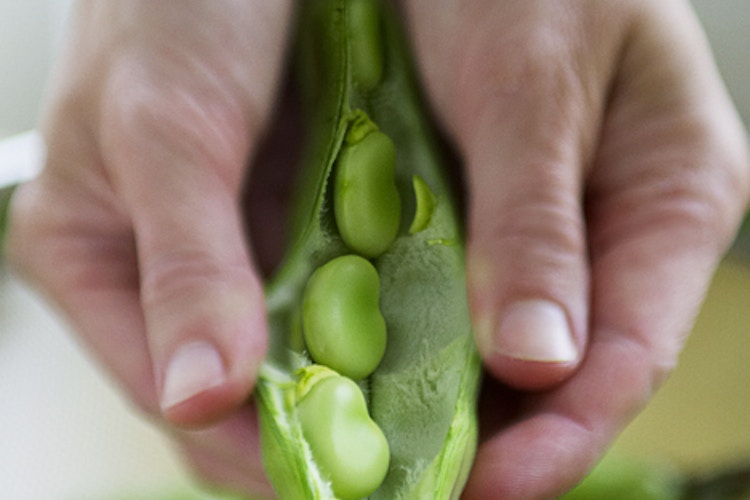Fava Beans 101
Despite all the obvious reasons why summer is wonderful–sunshine, seafood, afternoons on the beach, grilled anything, chilled rosé, cold soup, suntans, swimming pools, and rooftop cocktails–there's one thing that gets me especially excited this time of year: fava beans.
OK, so that probably sounds pretty anticlimactic, but I honestly wait all year for the few months when these fat green pods appear at the farmers' market. Available just a few months out of the year (roughly May - July), these tender, sweet, slightly nutty-flavored green beans are quite a lot of work to prepare, but are more than worth the effort.
Fava beans aren't exactly common on the American table, but they are eaten regularly throughout the Mediterranean and Middle East. They're actually quite healthy–packed with protein, iron, calcium, and vitamin A and C. I tried them for the first time in the South of France (where they are called fèves) several years ago, served with seared sea bass, fresh herbs, fruity olive oil, and baby tomatoes. I'm not sure if it was the seaside view, or the copious amounts of pale rosé, but I fell hopelessly, madly in love.
There are so many delicious ways to eat fava beans–simply drizzled with olive oil and sea salt, tossed into a salad with arugula, English peas, and radishes (recipe to come!), or pureed into a flavorful dip with lemon, mint, and red pepper flakes. I especially love them with fish, and I've got a beautiful, healthy recipe coming up soon with seared halibut and a fava bean-pea puree.
(Thank you to Signe Birck for the gorgeous photos in today's post!)

Now for the practical stuff: how do you prepare these rather gigantic beans? When you're buying them, keep in mind that you'll need to buy more than you think. Inside each pod are 5 or so beans covered in a hard, white protective covering.

After shelling the beans (and discarding the pods), you need to cook them for about 5 minutes in a pot of boiling water, blanch them in ice water to stop the cooking, and then peel off the softened white skins. Underneath, you'll find the tender, bright green bean that is so delectable to eat. It's the double peeling that makes the process so time-consuming, but if you bribe your friends with a glass of wine, you'll find ready workers!

We recently had some friends over for dinner and we started the evening off with a bottle of rose and big bowls of fava beans and English peas. Everyone happily chatted away as they peeled the beans and peas and sipped rosé–and once the peeling was done, I slipped downstairs to dump them all in a pot of boiling water. Easy.
Stay tuned this weekend for my favorite early summer Farmer's Market Salad with Fava Beans, English Peas, and Radishes (in a lemony vinaigrette).

(All photos in today's post are by Signe Birck.)



